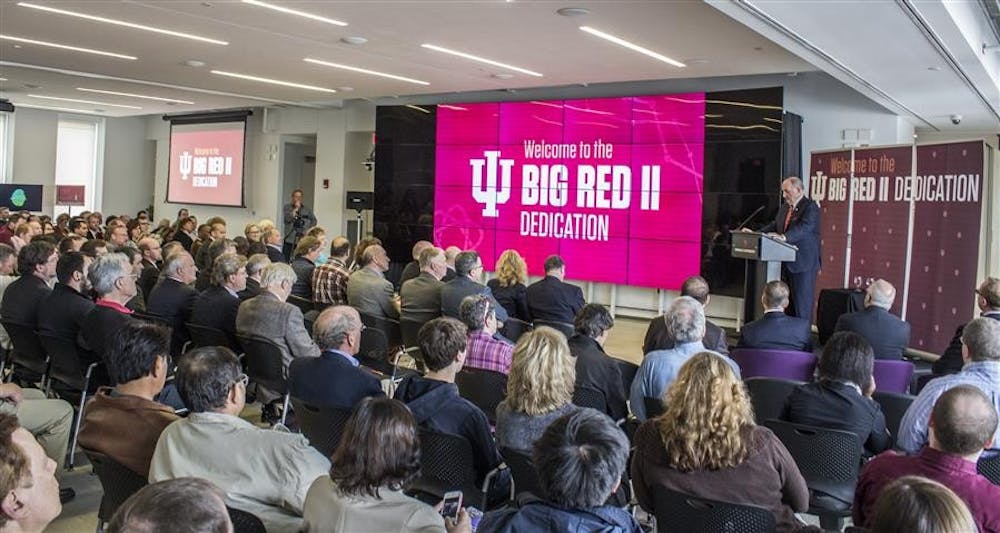IU President Michael McRobbie called dedicating IU’s new supercomputer a “truly historic occasion.”
The supercomputer, Big Red II, operates at a speed of one petaFLOPS or five thousand times faster than a standard PC. This means that the computer can compute one thousand trillion mathematical operations per second, a task that would take one person more than 31 million years to complete.
The computer was dedicated 2 p.m. Friday in the Cyberinfrastructure Building.
Big Red II will change the way IU does computational research, said Craig Stewart, executive director of IU Pervasive Technology Institute and associate dean of research technologies. He said Big Red II will not only expand the capabilities of researchers who are already using supercomputers, but it will also provide opportunities to researchers who before could not easily access supercomputers.
“We are already leaders within the United States,” Stewart said. “More than 10 percent of the research community at IU Bloomington and IUPUI uses the supercomputers. Our goal is to increase that usage.”
Senior manager of high performance systems at IU, David Hancock, said Big Red II will be “an immense competitive advantage for the University.”
“In terms of comparable systems at other universities, it’s the fastest university-owned computer that’s dedicated to one institution,” Hancock said.
Big Red II will be accessible to all researchers, faculty and graduate students at IU if they ask for an account, but it will also be available to undergraduates with support of a faculty member. Freshman Will Doub is studying informatics and said he is looking forward to the potential opportunity to see the supercomputer firsthand.
“I haven’t heard a whole lot about Big Red II, but I’m still really excited about it,” Doub said. “I’m excited to see what programs people are going to design for it and its software capabilities.”
The supercomputer is housed in IU’s secure Data Center and is, according to Hancock, “roughly the size of 12 industrial refrigerators, side by side.” Big Red II cost IU $7.5 million, but is expected to generate more money than it’s cost due to the research it will facilitate, based on the amount generated by IU’s original supercomputer.
“Big Red brought more than $250 million to the University through the
collective accounts from 2006 to present,” Stewart said.
Big Red II is expected to accommodate advancements in the sciences and computation, but also the arts and humanities. According to Stewart, the supercomputer will be useful in life sciences, environmental studies, text analysis in the humanities, film, animation and lighting design, to name a few.
“We will, with Big Red II, be able to provide tangible benefits to students and
researchers in at least 150 disciplines at IU,” Stewart said.
To this end, current computation staff at IU will be working hard to make sure Big Red II is used responsibly and productively.
“In a very real sense we dedicated Big Red II,” Stewart said. “But the staff of the computation center also dedicated themselves to supporting Big Red II to ensure that it changes the research and artistic capabilities of the university, the state, the nation and the world’s global community.”
IU dedicates new supercomputer

Get stories like this in your inbox
Subscribe





